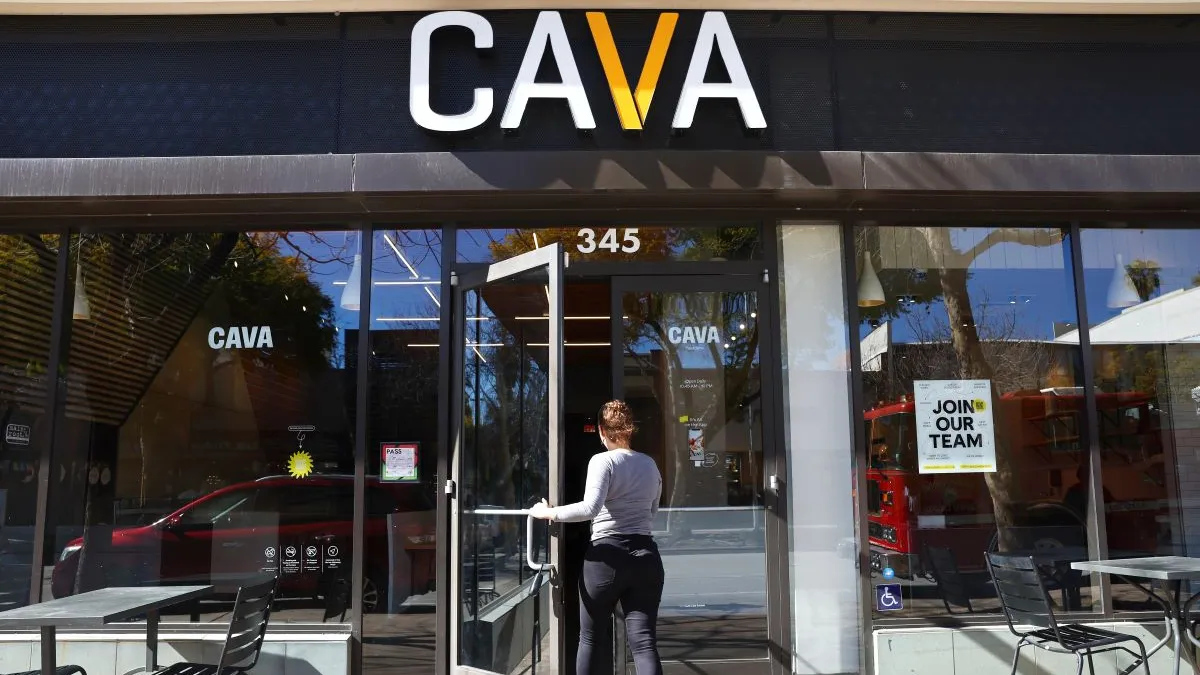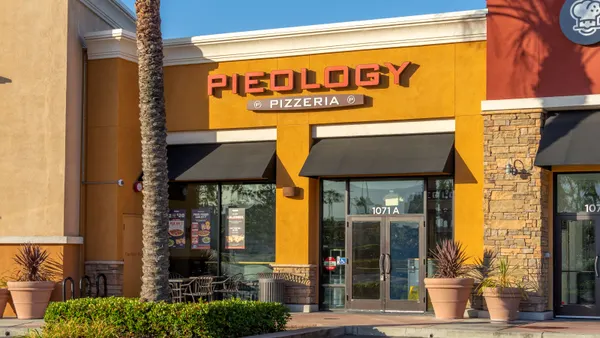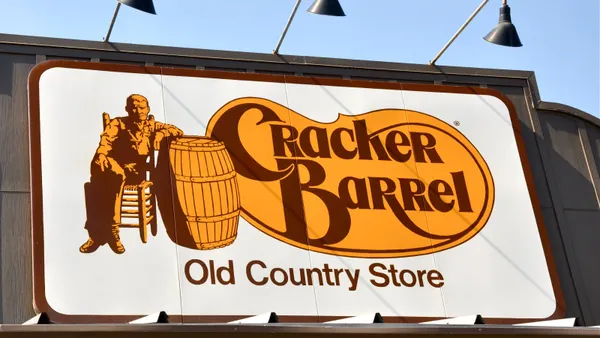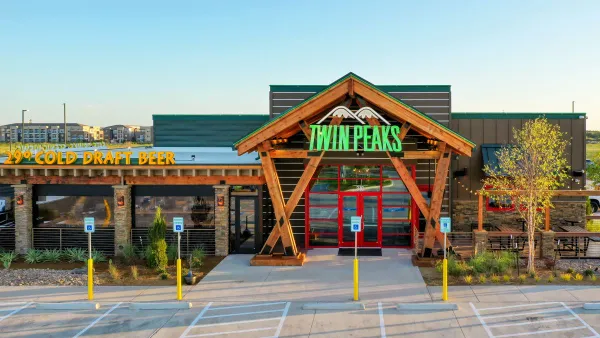Cava publicly submitted its IPO on Friday, months after it confidentially filed a draft registration statement to the U.S. Securities and Exchange Commission.
The S-1 filing revealed the company’s rapid growth trajectory — since 2016, it has expanded from 22 restaurants to 263 as of Q1 2023. Revenue has increased at a compound annual growth rate of 52.2%, and same-store sales rose 28.4% during the first quarter.
Restaurant Dive took a closer look at Cava’s IPO filing to understand the company’s financial position and how it plans to grow once it is public. Here’s what we learned.
Cava has been operating at a loss since 2016
During Q1 2023, the company reported a net loss of $2.1 million. That’s an improvement compared to the year-ago quarter, when Cava totaled $20 million in losses. In 2019 and 2020, the restaurant reported its biggest losses of $132 million and $186 million, respectively. Revenue grew during the past seven years, reaching $564 million in 2022 compared to $500 million in 2021. Despite operating in the red, restaurant-level margins reached 20% last year, and increased to 25% during the first quarter.
Cava said its history of financial losses could pose a risk, especially since it will incur more operating expenses as it opens restaurants, expands marketing channels and operations and hires more employees. As a public company, Cava will also take on new costs, including legal, accounting and other expenses, per the filing.
Additional expenses could come once it completes its Zoës Kitchen conversions. Cava bought Zoës in late 2018 and has been turning these restaurants into Cava units since then. The restaurant expects to complete these conversions by the fall. Conversions have less capital requirements than new builds, so new units are more expensive to construct. The company also anticipates a significant portion of its new units will have drive-thru pickup windows, which cost more to build.
Cava has the potential to reach 1K units by 2032
The company expects to open between 34 and 44 net new units, including eight converted Zoë’s Kitchen locations, for the rest of the year. The company has 100 restaurants in its pipeline, which will open in new and existing markets. Cava expects to open its first store in the Midwest in 2024, deviating from the“coastal smile” growth strategy it developed in 2016, which focused on coastal states and the Sunbelt. The brand will continue to fill in those areas as it claims territory in the Midwest.
“We also consider diversity of locations across suburban and urban markets, as well as specialty locations,” Cava wrote in the filing. “We will continue to focus on expanding our footprint in a variety of markets, including college campuses and transit hubs, with the majority of our growth expected in suburban markets.”
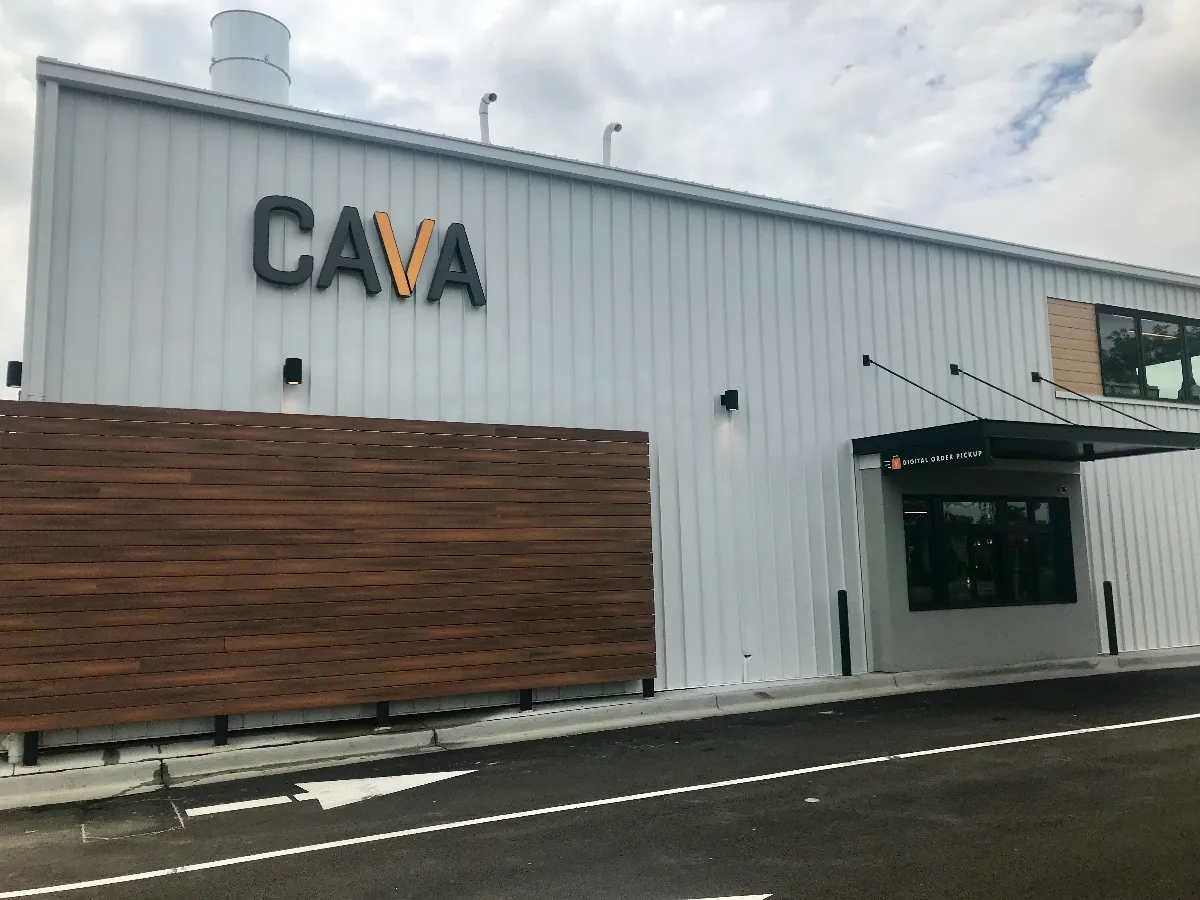
Cava is expanding via new restaurant formats
Cava began opening restaurants with drive-thru pickup windows in 2019. These restaurants have led to higher sales compared to traditional restaurants, and the company expects a significant number of its new locations to feature pickup windows. As of April 16, Cava was operating 20 of these store formats.
The company is currently piloting Cava digital kitchens, which don’t have dining rooms or customer-facing make lines and fulfill delivery orders from native and third-party delivery channels, as well as digital pickup and catering orders. As of April 16, Cava operates 10 such units. Customers order from these restaurants, which serve as centralized production hubs that support Cava’s catering business, via the Cava app. In select markets, Cava is also testing hybrid kitchens – which feature dine-in and catering service lines – to bolster its catering capabilities. The company originally launched catering in 2021.
Cava plans to update its loyalty program
As of April 16, the company had about 3.7 million loyalty members, or about 14,000 members per restaurant and 56% more than 2022. These customers represented 25% of Cava’s sales during the first quarter.
Cava sees opportunities to increase engagement with existing loyalty members and attract new ones. It plans to use its in-house data to further engage with guests as it experiments with menu exclusives to drive adoption, engagement challenges to boost frequency and attract lapsed customers and offering more tailored recommendations to boost average spend. Cava also plans to provide more personalized content on its mobile app, offering things like merchandise.
The company expects to add one-tap loyalty and pay in its restaurants, as well. Cava’s loyalty program is also integrated with payment, allowing customers to use digital wallets such as Apple Pay.



